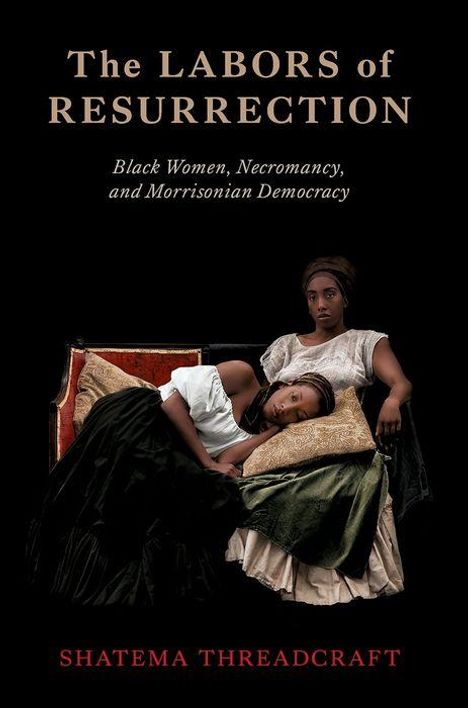Shatema Threadcraft: The Labors of Resurrection, Kartoniert / Broschiert
The Labors of Resurrection
- Black Women, Necromancy, and Morrisonian Democracy
(soweit verfügbar beim Lieferanten)
- Verlag:
- Oxford University Press, 10/2025
- Einband:
- Kartoniert / Broschiert
- Sprache:
- Englisch
- ISBN-13:
- 9780197758588
- Artikelnummer:
- 12313772
- Umfang:
- 296 Seiten
- Gewicht:
- 440 g
- Maße:
- 221 x 148 mm
- Stärke:
- 17 mm
- Erscheinungstermin:
- 28.10.2025
- Hinweis
-
Achtung: Artikel ist nicht in deutscher Sprache!
Weitere Ausgaben von The Labors of Resurrection |
Preis |
|---|---|
| Buch, Gebunden, Englisch | EUR 125,67* |
Klappentext
Black grief and Black death are among the most important forces in contemporary American politics. As Shatema Threadcraft argues in The Labors of Resurrection, spectacular death-experienced publicly and violently-has given rise to global political movements, but it has also had an important gendered effect that has complicated Black womens relationship to the Black people. Though Black women face a crisis of premature death, they are unlikely to experience violence in public ways. Their deaths are most often instances of intimate partner violence and occur in private when most large-scale Black political mobilization centers on deaths that are spectacular.
Profiling Ida B. Wells, Mamie Till-Bradley, Clementine Barfield, Barbara Smith, and Margaret Prescod, Threadcraft highlights how the centrality of spectacular death has functioned to marginalize Black women in the stories of Black peoplehood and has ensured that they are not the main beneficiaries of large-scale Black political mobilization. Black women receive ample, if largely symbolic, recognition for keeping Black communities alive, but they have not received the recognition they are due for their role in memorializing the Black dead. Threadcraft builds on her award-winning scholarship about Black womens access to intimate life and democratic freedom, to consider how state officials, Black activists, and others assign meaning to the racial politics of Black suffering. In so doing, she looks at the challenge that contemporary feminist activists face in attempting to make visible Black women within the Black political sphere.


